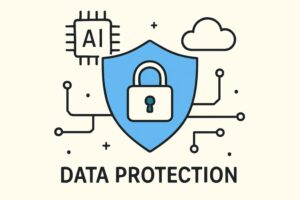Tech Tips
Modern Data Protection Solutions: Trends and Tools
Key Takeaways
- Artificial Intelligence (AI) revolutionizes data security by enhancing threat detection and response.
- Zero Trust Architecture (ZTA) is becoming a standard approach to minimize security risks.
- Privacy-Enhancing Technologies (PETs) are gaining traction to ensure data privacy without compromising functionality.
- Organizations must comply with evolving global privacy regulations to avoid hefty penalties.
- Automation and AI-driven tools are streamlining data protection processes, improving efficiency and accuracy.
Table of Contents
- Introduction
- AI in Data Security
- Zero Trust Architecture
- Privacy-Enhancing Technologies
- Global Privacy Regulations
- Automation in Data Protection
Introduction
Protecting sensitive information is more critical than ever as society grows more digitally interconnected. Organizations face increasingly complex cyber threats, prompting a rapid evolution in their tools and strategies. Choosing the proper data protection products is crucial—not only to defend against evolving attacks, but also to ensure regulatory compliance and operational resilience. In 2024, the best solutions integrate intelligence, automation, and cutting-edge privacy, establishing new security and business continuity benchmarks.
Key innovations driving this change include deeper integration of artificial intelligence (AI), adoption of Zero Trust frameworks, and the rise of privacy-enhancing technologies (PETs). Securely handling data is not just a technical necessity; it has become a core business imperative that impacts customer trust and legal liability. Companies safeguard their operations, reputation, and future growth by staying ahead of threats and adopting modern data protection products.
As threat landscapes become more dynamic, proactive data protection strategies are no longer optional—they’re mission-critical. Organizations that invest in forward-thinking security infrastructures gain a competitive edge by demonstrating accountability and resilience. In this evolving environment, aligning cybersecurity with broader business goals is essential for long-term success.
AI in Data Security
Artificial intelligence is reshaping how organizations approach data protection by leveraging automation and advanced analytics. Instead of relying solely on static rules, AI-enabled tools can continuously learn from new threats, detect subtle anomalies, and anticipate attacks. Modern solutions integrate machine learning models into their threat detection engines, scanning vast network traffic and data logs in real time. These systems identify patterns indicative of malware, phishing, or unauthorized data access that traditional security controls might overlook.
AI can accelerate incident response, automatically trigger remediation procedures, and minimize the window in which attackers can operate. For example, when an abnormal login is detected outside of regular business hours, AI can flag the event, restrict access, and alert administrators, dramatically reducing potential data loss and downtime.
Zero Trust Architecture
Zero Trust Architecture (ZTA) represents a fundamental shift from the traditional “castle and moat” network security model. In Zero Trust, no entity—inside or outside the organizational perimeter—is automatically trusted. Every access request is authenticated, authorized, and inspected for anomalies before granting the minimum necessary permissions. This model is particularly effective against sophisticated cyberattacks that exploit internal users, compromised devices, and lateral movement within the network.
Implementing ZTA requires multifactor authentication, continuous user and device verification, segmentation of network assets, and the principle of least privilege. Network management platforms such as TP-Link’s Omada Controller enforces Zero Trust by unifying access control and monitoring network activity. The result is a dramatically reduced attack surface, containment of breaches, and better visibility into user activity and data flows. As remote work and cloud adoption continue to rise, Zero Trust has become an essential foundation for resilient security architectures.
Privacy-Enhancing Technologies
Privacy-Enhancing Technologies (PETs) offer advanced approaches for organizations to analyze, share, and utilize data while maintaining strict privacy safeguards. These tools are particularly crucial in today’s digital age, where the volume and sensitivity of collected data are increasing rapidly. Homomorphic encryption, for example, allows computations to be performed directly on encrypted data, eliminating the need for decryption and minimizing the risk of exposure throughout the entire data lifecycle. Another key method, differential privacy, adds statistical noise to datasets, enabling the extraction of meaningful insights without compromising the identities of individuals within the data.
PETs enable secure data collaboration between institutions in healthcare, finance, and research sectors. As organizations face mounting regulatory pressure and evolving privacy laws, these technologies support compliance and uphold privacy-by-design principles. By integrating PETs, businesses demonstrate a proactive stance on data protection, building consumer confidence, and reinforcing their reputation as trustworthy information stewards in an increasingly privacy-conscious world.
Global Privacy Regulations
Compliance with international privacy regulations is not optional in today’s landscape. Laws such as the European Union’s General Data Protection Regulation (GDPR) and the California Consumer Privacy Act (CCPA) are two comprehensive frameworks mandating strict controls over data collection, processing, storage, and transfer. These regulations empower users with data access, correction, and deletion rights, while imposing hefty consequences for non-compliance.
Modern data protection requires ongoing monitoring of the regulatory environment, cross-border data flow management, and robust data governance policies. Organizations that proactively align their data protection practices with emerging global standards stay ahead of legal risk, build customer loyalty, and enhance brand value.
Automation in Data Protection
Automation is a crucial enabler of effective and efficient data protection. In an era where threats can emerge and propagate in seconds, automated tools for data discovery, classification, and policy enforcement are indispensable. These solutions help security teams focus on strategic decision-making rather than manual, error-prone tasks.
Incident response automation means threats are neutralized with minimal human intervention. For example, if a dataset containing sensitive customer records is accessed anomalously, automated systems can immediately restrict access, initiate investigation protocols, and notify relevant stakeholders. Automation ensures consistent, scalable protection across all platforms and workflows as data environments become more complex, spanning on-premises, cloud, and edge resources.
Adopting modern data protection solutions is now a business necessity. As cyber threats grow in scale and complexity, organizations must leverage AI, Zero Trust principles, PETs, regulatory compliance, and automation to safeguard their most valuable digital assets and maintain resilience in a dynamic threat environment.






